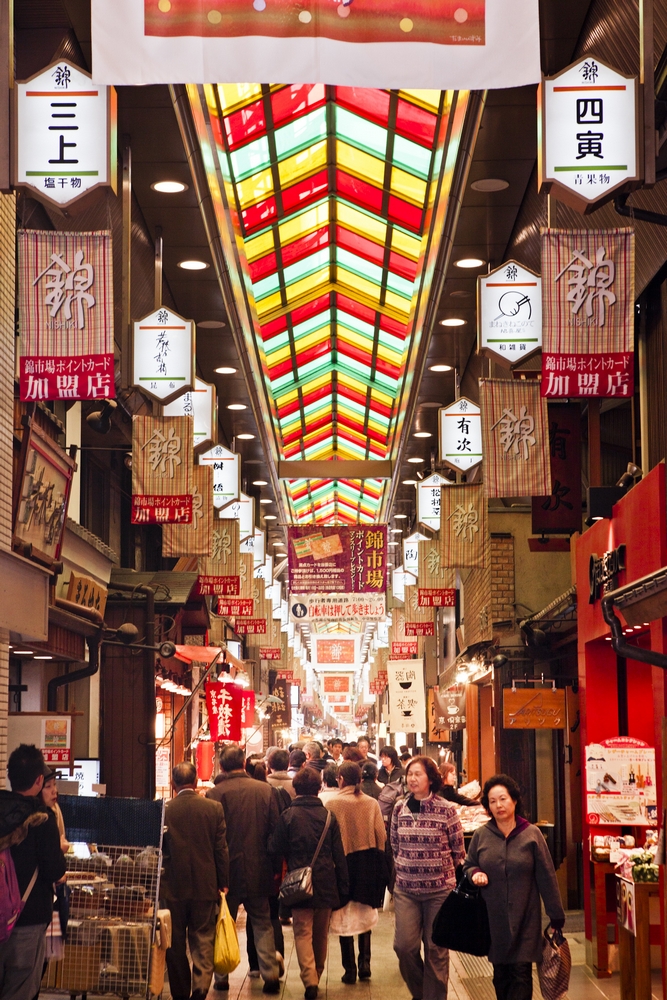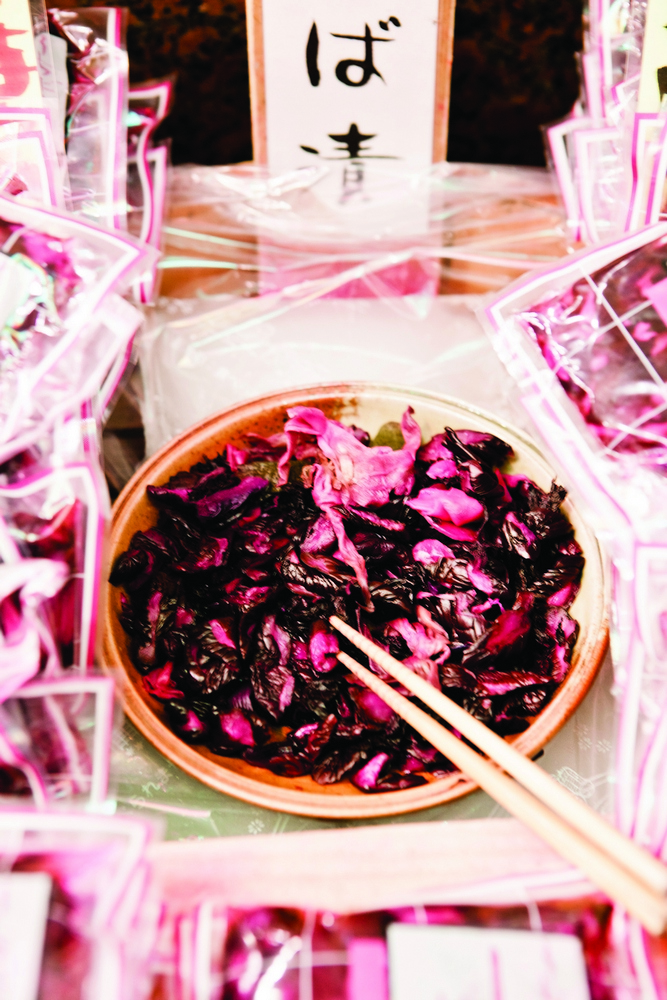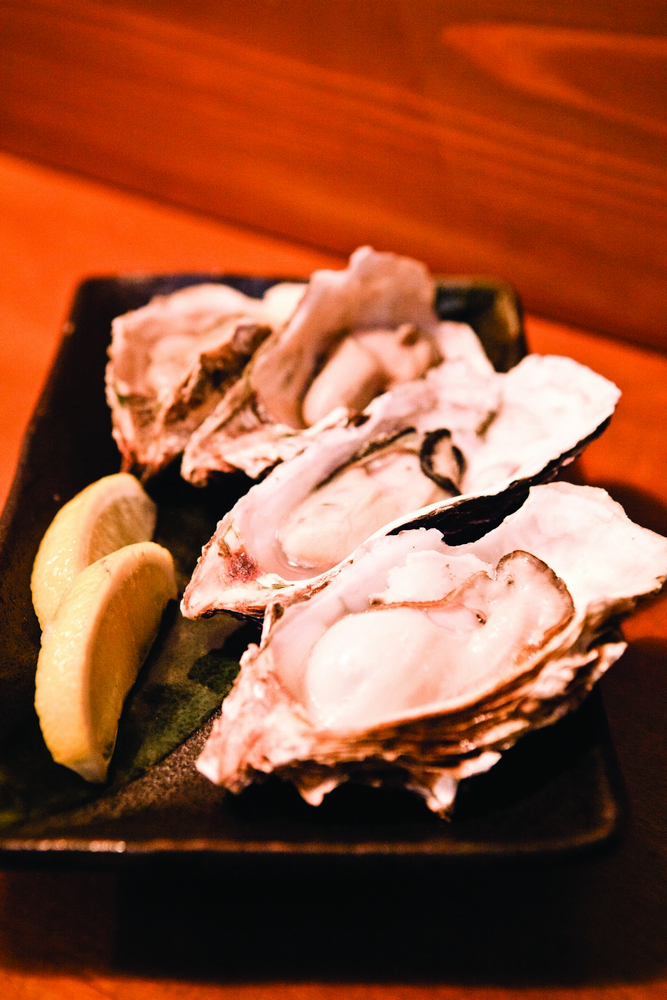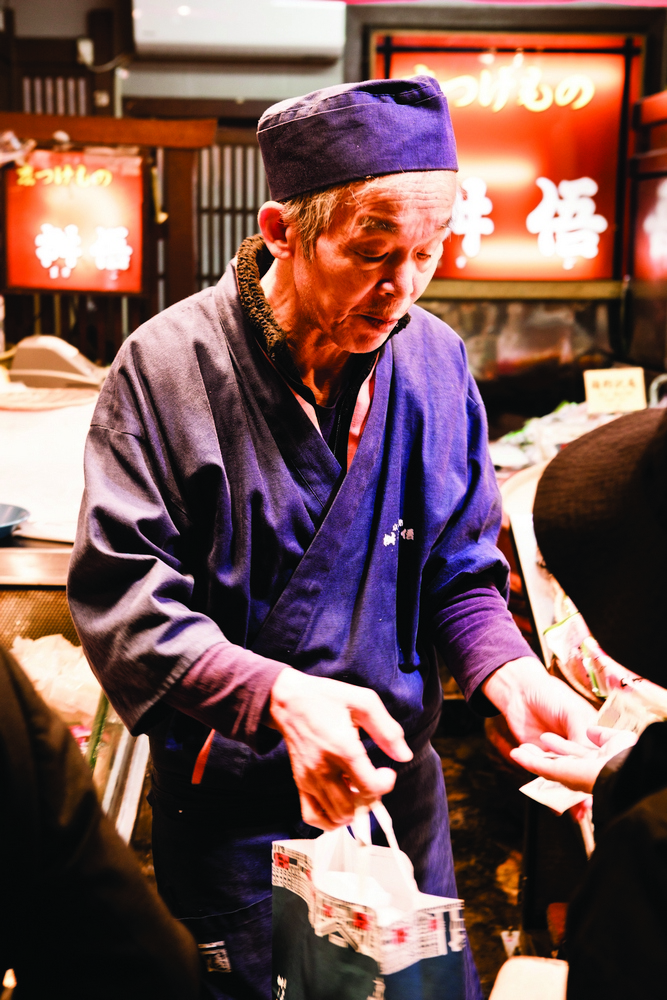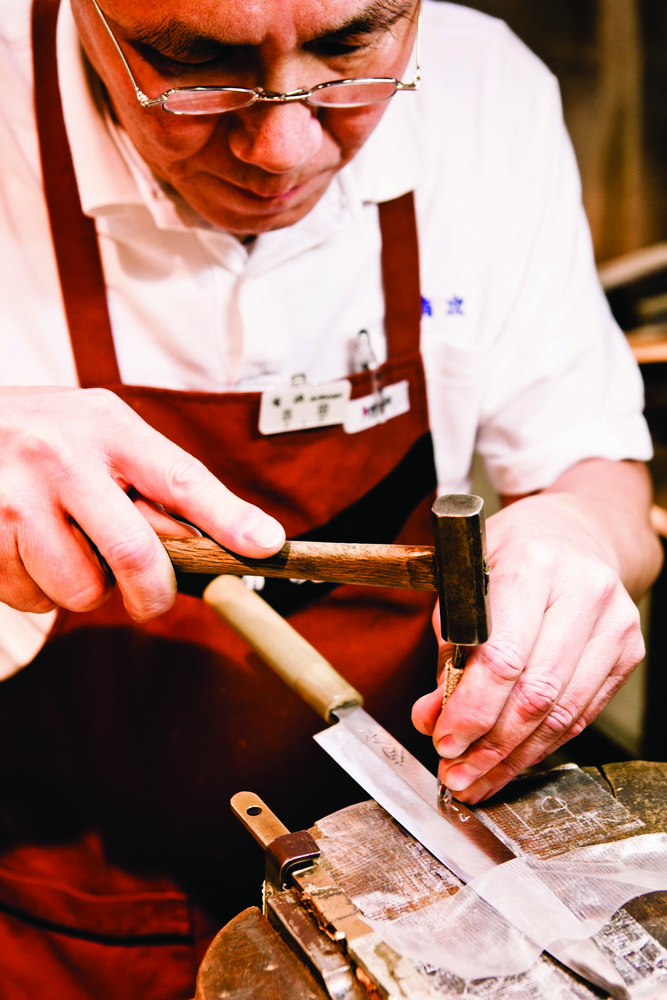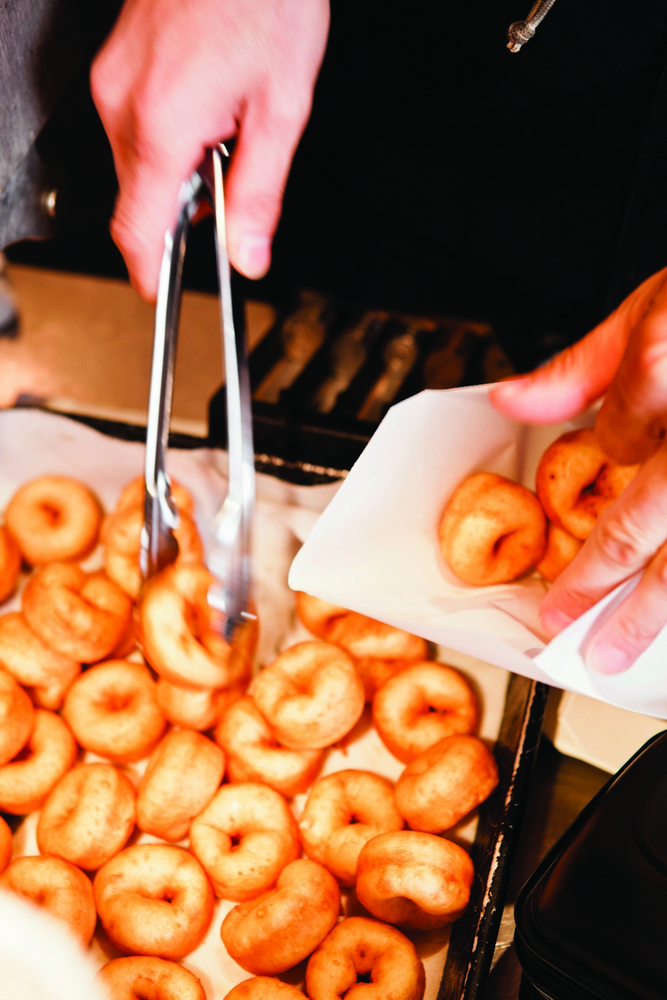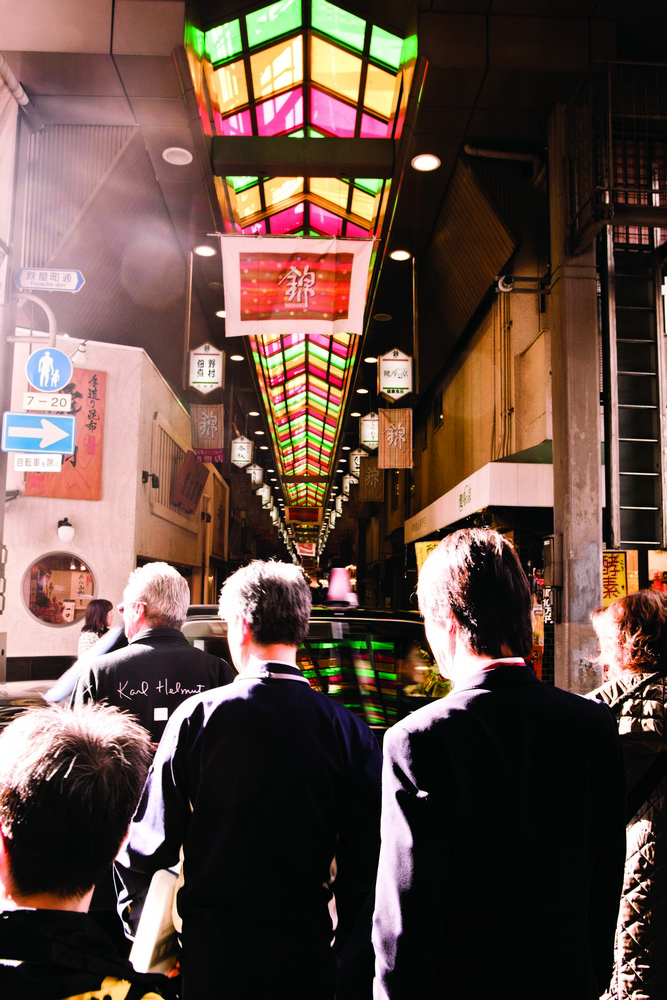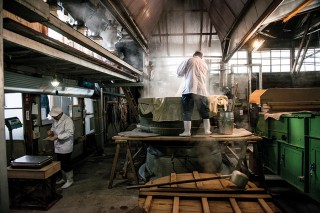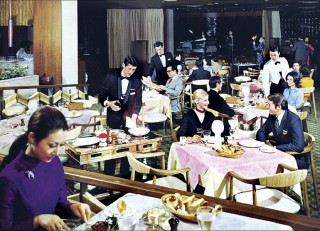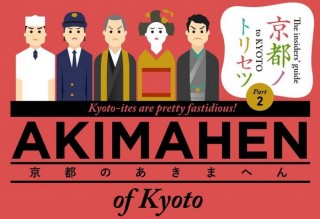Continuing west, you’ll soon come to the great fish shop that is Kanehide (No. 13). It’s unlikely that you’ll be picking up fresh fish to take back home, but the guys here are super friendly, and photo ops abound. On a recent visit they ushered me in to photograph some kamenote (“turtle’s-feet”) barnacles, surely the most unusual looking specimens in a market that abounds with culinary exotica.
You’ll know when you are near Yamadashiya (No. 16) from the fragrance of roasting green tea. Pick up some smoky bancha or, if you feel like treating yourself, some of their exquisite kabusecha. Selling at 2,100 yen (about US$24) for 100 grams, it isn’t cheap, but it’s well worth the splurge. Nearby is the amazing Kikuya (No. 19), a store dedicated to what the Japanese describe generically as chinmi—exotic and luxury foodstuffs. Their products range from whimsical candies shaped like Lego blocks to delicacies packaged in small, edible baskets made of konbu seaweed. Odder still is the inago tsukudani—locusts simmered in mirin and soy sauce. They go down great with a cold beer.
There is beer aplenty at Tsunoki (No. 24), but it’s the brilliant selection of locally brewed sakes that makes visiting here a must. “We have been in existence since 1787,” says eighth-generation owner Teruo Fujii, as he proudly shows me the shop’s original charter, framed above the cellar doorway. “So we know our sake.” he recommends a cup of unpasteurized Matsumoto Shuzo namazake for drinking on the spot, and a bottle of Sawaya Matsumoto junmai-shu to take back home.
If dashi ingredients are your idea of a souvenir, pop into Nishiki Daitomo (No. 27). “Our Chinese customers buy shiitake mushrooms; the French pick up kelp, and the Spanish, believe it or not, love hijiki seaweed,” Proprietor Yuasa-san tells me with a smile. “Dashi has gone international!”
And there’s more, so much more: Nishiki is home to 126 shops, most of them specializing in one thing or another, from aromatic spices and mochi to the most delicate laquerware and porcelain. If you don’t have the time—or appetite—to explore them all, be sure at least to include these on your agenda: Kanematsu (No. 108), with its perfect vegetable produce (splash out on the momoichigo strawberries: a pair will set you back about US$14) and excellent upstairs vegetarian restaurant, Yaoya no Nikai; pickle purveyor Uchida (No. 109), with its jewel-toned tsukemono (pickled vegetables) and heaps of free samples; Inoue Tsukudani-ten (No. 111), a local-style delicatessen with ready-made obanzai fare that you can take away in little plastic trays; and Konnamonja (No.50), a massively popular stop for tofu donuts, soy-milk ice cream, and even soy-milk dog food.
By now you will have reached Nishiki’s western limit. But before you leave, whatever you do, stop in at fishmonger-cum-izakaya Daiyasu (No. 125), the seafood stall where I encountered my kimono-clad matron. It’s an ideal place to rest tired feet and get in one last bite: two supremely fresh magaki oysters and a small flask of hot sake cost just about US$12. Such quality for such a pittance seems almost sacrilegious, but I’ve never heard anyone complain.
For a handy map of Nishiki Market, visit kyotonishiki.or.jp
This article originally appeared in the February/March 2013 issue of DestinAsian (“Bounty Hunting”)


